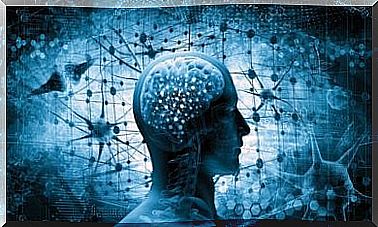Amnesia: Types And Characteristics

One of the most famous memory disorders is amnesia. This is a clinical problem that causes significant deficits in the encoding, storage and retrieval of information from the experiment. But the basic psychological process of memory is complex and multifactorial, making amnesia sometimes a symptom difficult to explain precisely.
Patients with amnesia have been an invaluable source for understanding a little better how our memory works. Studying the different deficits that we can find helps us to understand more in depth the structure and functionality of memory. Most of the studies on the subject have focused on amnesic syndrome, a syndrome in which episodic memory is damaged.
Nonetheless, when we study amnesia in episodic memory, we do so around a temporary organization of damage. In other words, we can organize amnesia into two types: (a) retrograde, if it has forgotten what happened before the illness or accident, and (b) antegrade, if the ability to generate new memories is damaged. We will explain these two categories more broadly in the following sections.
Retrograde amnesia
Retrograde amnesia is characterized by the inability to access memories prior to the time the lesion occurred in memory. The time period affected can vary, from forgetting a few days to a lifetime. It is important to take into account that the syndromes, disorders and injuries produced by this type of amnesia maintain the capacity to create new memories intact; on the other hand, other types of memory are also kept intact, such as implicit memory and procedural memory.

The origin and cause of this disorder are usually organic in nature. In other words, it is the consequence of a brain injury, it can actually be caused by injuries in the hippocampus, the basal ganglia or the diencephalon. Retrograde amnesia, however, can occur regardless of any type of injury, which is called psychogenic or functional amnesia.
One of the most studied patients, suffering from a very amnesic syndrome, was Clive Wearing. This subject could not recall any information which had occurred before his accident in 1985. An accident which caused the destruction of his hippocampus and serious damage to the temporal lobes. Besides retrograde amnesia, Clive also suffered from anterograde amnesia which did not allow him to create new memories; this patient’s life meant living in an endless present from which he could not escape.
Anterograde amnesia
Unlike retrograde-type disorder, anterograde amnesia is the inability to create new memories after injury. Any information that had been stored before the injury remains stored in memory subject to the normal phenomena of forgetting. Again, in most cases, this lesion is the result of an organic lesion, where the hypothalamic and temporal structures are damaged.
A special quality of this disorder is that only the explicit memory encoding is damaged. This means that the subject, despite their inability to create memories, can learn new procedural or implicit skills. For example, if a patient with anterograde amnesia plays the piano every day, it will improve over time; however, he will not explicitly remember having played the piano, for him every day would be like the first.

One of the most famous cases of antegrade amnesia was that of HM (the acronym for patient Henry Molaison). This subject had to undergo surgery to relieve severe seizures. During this surgical procedure, a large part of the hypothalamic structures was extracted. This was the end of his epileptic attacks, but it caused serious damage to his memory.
HM was unable to remember anything new after the operation, but his executive and procedural abilities remained intact. When we wanted to strike up a conversation with him, he was consistent and, at first glance, didn’t seem to have a problem; but after we ended the conversation and we came back to him, he couldn’t remember us.
We previously mentioned that the two types of amnesia are independent: one can appear without the other. It should be remembered in this regard that the reality of amnesic syndrome is much more complex. It is common for lesions to affect a multitude of brain nuclei, which triggers mixed amnesias. Even so, the study of these “pure” amnesias is interesting to better understand the functioning of our memory.










